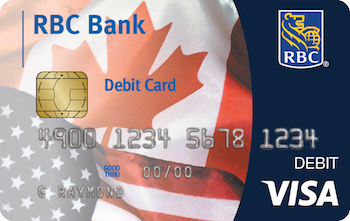Published February 26, 2019 • 4 Min Read
Maybe you need to make monthly mortgage payments on your winter property down south, or perhaps you like to hop the border to do some shopping. Either way, there are a few differences you’ll find when making payments in the U.S. compared to back home in Canada.
Making Payments in the U.S.
It can be handy to pay U.S. invoices — from utility to department store bills — using a U.S. cross-border banking account. It allows you to avoid unfavourable currency exchange rates and foreign transaction fees of about 2.5% and can simplify your bill paying.
U.S. Bills
Paying bills in the States works a little differently than what you might be used to in Canada. To start, utility company bills have to be paid in U.S. dollars. You can use your Canadian account and utilise U.S. bank drafts (about $7.50 CAD per draft) or wire transfers (about $13.50 CAD per transfer) to make payments in the right currency, but those fees can quickly add up.
With a cross-border banking account, you can transfer funds from your Canadian to a U.S. account online whenever you wish.
While there are many ways to pay bills in the U.S., it’s important for Canadians to know that in the States you can’t typically pay for utilities at ATMs, via telephone banking, or at bank offices. So while you’re online doing some cross-border banking, pay off those U.S. utility bills in an instant using online banking. Simply fill in the merchant’s name, address and your account number — and you’re all set.
Tip: If you’ll be sending regular payments to select accounts, consider setting up regular automatic payments. In fact, many U.S. merchants — like utility providers — will help set up those payments for you.
Fuel
With a U.S. credit card or debit card you can pay at the pump across the States. The card reader may ask you for a zip code, but even if you don’t have a U.S. address it’s no problem. Just give the three digits on your Canadian postal code, followed by “00″ at the end.
Sending Money Online in the U.S.
There’s no exact equivalent to Interac in the United States, but if you’re used to using e-Transfer for paying individuals such as contractors in Canada, there are decent global options that work in the same way — requiring no more than the payee’s email address to set up a payment.
PayPal is probably the best-known e-Transfer vendor and you can use it in the States. All you need to do is link up your bank account or credit card (a U.S. account is best if you want to avoid currency conversion fees), then you can start making recurring or one-time payments to any vendor that accepts PayPal.
Other e-Transfer options include Google Pay Send (you’ll need a U.S. chequing account to get set up), Stripe, Square, and Plooto. If you have an iPhone, Apple Pay lets you add your debit and / or credit cards to make purchases at participating retailers using a retailer’s contactless payment terminal. You may also be able to use Apple Pay to pay individuals through Messages.
Using Cheques in the U.S.
There are a couple of things to look out for if you’re using cheques in the United States.
The first thing to note is that payees and banks aren’t required to hold post-dated cheques in the U.S., so you might find you’ve been debited earlier than expected.
The next thing to be aware of is that while some U.S. banks will let their customers cash Canadian cheques, there can be long hold times (from a couple of days to a couple of weeks!) and high fees involved. Foreign exchange fees also need to be factored in.
This can be an inconvenience to both you and the vendor you’re paying. To make things easier, consider getting a U.S. checking account. That way, you can order U.S. paper cheques and pay for bills with ease whenever you’re in the States.
RBC Bank is RBC Bank (Georgia), National Association (“RBC Bank”), a wholly owned U.S. banking subsidiary of Royal Bank of Canada, and is a member of the U.S. Federal Deposit Insurance Corporation (“FDIC”). U.S. deposit accounts are insured by the FDIC up to the maximum amount permissible by law. U.S. banking products and services are offered and provided by RBC Bank. Canadian banking products and services are offered and provided by Royal Bank of Canada. U.S. deposit accounts are not insured by the Canada Deposit Insurance Corporation (“CDIC”).
This article is intended as general information only and is not to be relied upon as constituting legal, financial or other professional advice. A professional advisor should be consulted regarding your specific situation. Information presented is believed to be factual and up-to-date but we do not guarantee its accuracy and it should not be regarded as a complete analysis of the subjects discussed. All expressions of opinion reflect the judgment of the authors as of the date of publication and are subject to change. No endorsement of any third parties or their advice, opinions, information, products or services is expressly given or implied by Royal Bank of Canada or any of its affiliates.
Share This Article





